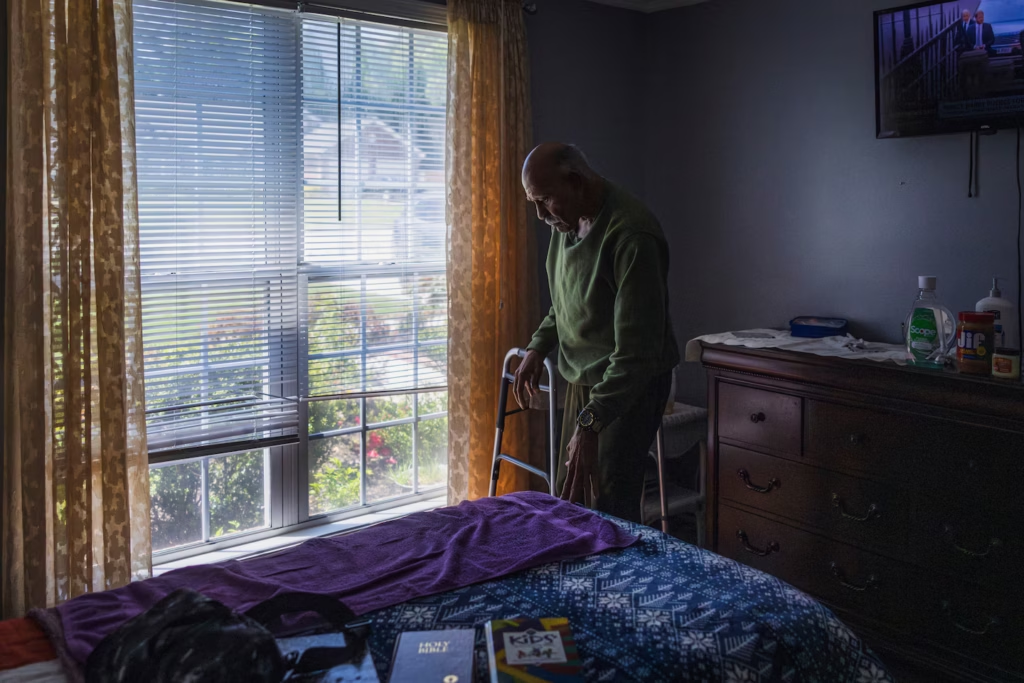The halls of A.G. Rhodes nursing home, filled with the sounds of musical therapy and the quiet concentration of puzzle-solving, paint a picture of a community reliant on Medicaid. But this tranquility could be shattered as lawmakers consider significant cuts to the program, particularly the “provider tax” arrangement that sustains many nursing homes.
Owen Allen, 64, a resident at A.G. Rhodes, relies on Medicaid following a diagnosis of muscular dystrophy. Like many older adults, Allen’s situation highlights the critical role Medicaid plays in long-term care. While Medicare covers medical expenses and hospitalization, Medicaid steps in when personal funds are exhausted, covering the substantial costs of nursing home stays.
“Their coverage will be at risk,” warns Katie Sloan Smith, president and chief executive of LeadingAge. “Either the home itself will have to make up for that loss in some way or they will simply have to say, ‘We can no longer support people on Medicaid’ and close those beds.”
According to KFF, a health policy organization, Medicaid paid $255 billion for long-term care services in 2022, including $59 billion for stays in institutional facilities like nursing homes. More than 60 percent of nursing home stays nationwide are financed through Medicaid. This dependence underscores the vulnerability of the sector to potential funding cuts.
The “provider tax” system, where states tax nursing homes and then receive higher federal matching funds, is a key target for budget cuts. House Republicans argue it’s a “shady accounting move,” but nursing home officials and senior advocates contend it’s essential for financing long-term care.
Michael Cannon, director of health policy studies at the libertarian Cato Institute, dismisses these concerns as “completely selfish shortsighted pleading by an inefficient industry.” He argues that public funds should not be the default payment for elder care, suggesting it discourages personal savings and the development of affordable long-term insurance options.
However, nursing home groups argue that Medicaid reimbursements already fall short of covering care costs. “Nursing homes say Medicaid reimbursements are already too low to cover the costs of providing care — 82 cents on the dollar, according to federal research — and further cuts would be devastating to an industry facing intense financial pressure.”
The financial strain is evident in the closure of nearly 9 percent of nursing homes between 2011 and 2021, according to a 2023 study. Industry groups also oppose a proposed Biden administration regulation to establish minimum staffing standards, claiming it’s unworkable and would accelerate closures.
Deke Cateau, chief executive of Georgia’s nonprofit nursing home network A.G. Rhodes, emphasizes the human impact of these potential cuts. “These are not folks who did not work or have been a burden of society. They have worked for most of their lifetime, and now they are at a stage where we need to take care of them, where our society needs to take care of them.”
The implications extend beyond traditional nursing homes. Medicaid also funds community-based programs, allowing seniors to stay in more familiar settings like smaller group homes or receive home visits. Nadine Johnson, who operates personal-care homes in Georgia, highlights the importance of these programs in maintaining residents’ dignity and community integration.
As lawmakers debate $880 billion in potential cuts over a decade, the future of Medicaid funding hangs in the balance. The outcome will significantly impact the lives of countless seniors and the viability of the nursing home industry


